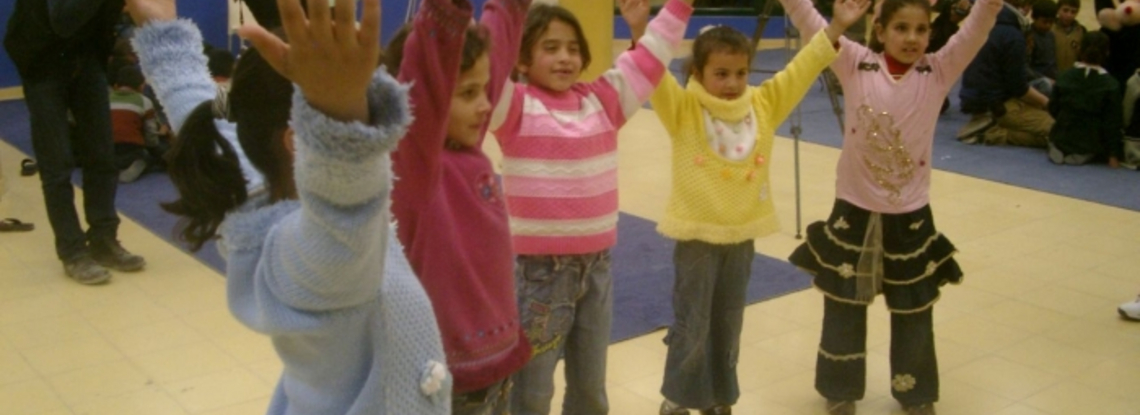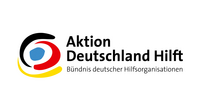Gaza: February 2009

"Welcome to Gaza"
Emergency Pedagogy Crisis Intervention in the Ruins of Gaza
The pedagogical emergency aid for psycho-traumatised children in Gaza has begun. A crisis intervention team from the Friends of Waldorf Education worked for four days in the ruins of Gaza, to assist traumatised children in a pedagogical acute aid mission with methods from Waldorf-pedagogy. The emergency crisis intervention, which was suggested by Israeli friends, is motivated exclusively by humanitarian reasons.
During the military offensive in the Gaza Strip, which lasted over three weeks, 1,415 people were killed and about 5,500 injured according to the health department of Gaza. The UN believes half of the victims were civilians. The medical care of the population has fallen apart due to military attacks and air-tight blockading of the Gaza Strip. Water and power supply as well as the supply of food and relief goods are also largely damaged or destroyed. Everything necessary for survival must be smuggled though the approximately 2,000 illegal tunnels on the border to Egypt. The diggers are mostly teenagers who earn about 100 Scheckel per meter. Many people live in the tunnel system since the start of the daily bombardments, to find protection of because their homes were destroyed.
Considering their experiences with the situation of children in war regions or after natural catastrophes—most recently in 2006/07 four missions in Lebanon as well as in 2008 in the earthquake region of Sichuan/China—the Friends of Waldorf Education sent a 15 person emergency team consisting of anthroposophical doctors, therapists, Waldorf pedagogues, and interpreters to Gaza, in order to assist traumatised children and their families in a pedagogical acute aid mission.
The cooperation partner of the “Friends” in Gaza was the “Gaza Community Mental Health Centre” in Gaza-City, a non-governmental umbrella organisation for mental health, which works together with the World Health Organisation (WHO). The centre was itself heavily damaged on January 27th by a rocket attack. The centre’s highly competent trauma experts work under the direction of psychiatrist Dr. Ahmad Abu Tawhina in kindergartens, schools, and hospitals throughout the Gaza Strip. But they have reached their limit after weeks of trauma work. “The emotional destruction is even greater than the material”, reported the Palestinian trauma experts to us.
The pedagogical emergency team of the “Friends” worked at the Omar Bin Khattab-School, an UN-run school in the totally destroyed northern district of Gaza-City. The school was heavily damaged by an Israeli rock attack and subsequent military action by special forces. Apparently the school was also misused as a military stronghold of Hamas. Two children were killed in the attack and over 20 injured. Hamsam, a ten year old girl, told us about how her sister was shot dead before her eyes by soldiers. Two children showed us their gunshot wounds. In a UNICEF tent children make form drawings and listen attentively to the stories we tell. They crave pictures. On the schoolyard we play circle games. Although the children do not want to touch us at first, the hands of aid workers are then quickly fought over. The hand offers security. The seven year old Aissa suddenly cries: “Many foreigners come to us to photography us. Then they move on. But you came to play!”.
In the city of Khan Younis in the south of Gaza, the emergency team worked in the school Eid Al Agha. The façade of the building is marked with machine gun salvos. Missile attacks on the city continue during our stay. Many children are at first inaccessible and absent. They react fearfully to flying objects, with which the Israeli military monitors Gaza. A striking number of children ask for food from the aid workers. The children’s drawings, hanging on the walls of the school, are also shocking. They provide a vivid report of their traumatic experiences and the merciless extent of their internal destruction.
A particular challenge was the work with traumatised, deaf children at the Atfaluna Society for Deaf Children. It is an institution which cooperates with the Christoffel-Mission for the Blind. Eurhythmy and experiential pedagogical exercises were lead with multiple children’s groups. There were also opportunities to draw and sculpt with clay. The kindergarten group performed circle and round games. The school’s art teacher lives in the camp of Jaballia. Two neighbouring houses were destroyed during the attack—since then he has not painted. When he saw the children drawing, he broke down. He grabbed a brush and painted his experiences. His traumatic cramping had resolved.
Multiple missions have been carried out in the Al Qattan Centre in Gaza City. The institution is run by the Al Qattan Foundation in London. Many parents brought their traumatised children to the centre for artistic therapy. The director Reem Abu Jaber requested that we organise training for her employees. Here we encountered for the first time Almesa, Zenab, and other children of the Samouni-Clan.
The rest of the Samouni-Clan now lives in the rubble of their homes in provisional sheds. A 12 year old boy showed us the still bleeding wounds on his back. A one-and-a-half year old girl has burns on her legs, which clearly indicate the use of white phosphor. Her brother has similar burns on his back. White phosphor causes terrible burns when it comes in contact with skin. Besides this, poisonings cause lasting damage to internal organs. Even the smallest amounts of this horrendous substance can cause suffering in the bones and blood. The use of this substance is not banned in the form of smoke clouds for protection of soldiers according to international law, but its use as chemical weapon against civilians is. The 15 year old Helmi pointed to his navel, which is encircled by shrapnel. Many children have purulent, incrusted eyes and purulent infections around the mouth. The ten year old Abdella Heja Samule was in the house in which 36 family members died. He reported about how his four year old brother shook on the knees of his dead father: “Then the soldiers came into the room and shot him dead, my mother, and my other 16 siblings. I am the only one in my family who survived!”
After four days of successful work, our crisis intervention team had to leave Gaza at the telephone request of the German Embassy in Cairo. We were about to begin emergency pedagogy work with orphans at the “Al Amal Institution for Orphanage”. With assistance from the embassy, we were able to pass through the border at the last minute.
The escape like departure was captured by German television. The reported asked the deciding question during the return of the team: “What could you achieve?”
The emergency pedagogy crisis intervention was an acute aid, comparable to first aid at an accident. Although immediate healing cannot by achieved with first aid measures, these can still be an essential contribution to the continued healing of injuries. This is also true for emotional wounds, likewise for psycho-traumata.
We gave the affected persons the assurance that their pain has been noticed by others. We showed the children, that not every stranger has to be a murder. We guided them for a moment to the experience, that life can also be beautiful. And we know that hope and joy are healing factors!
For this work benefitting psycho-traumatised children in Gaza, the UN-Goodwill ambassador for children in armed conflicts, Mrs. Radhika Comaraswamy, gave her recognition and thanks at the Omar Bin Khattab-School.
As soon as access to Gaza for aid organisations is again possible, the “Friends” want to continue their work uninterrupted there. They can do this though, only when they have enough donated funds available.
Bernd Ruf
This is a shorten version. To read the full text, click here.


